


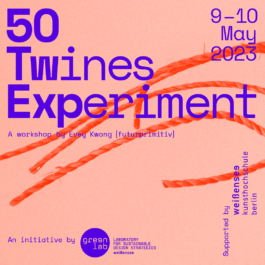
Visual by Evey Kwong
Iterative design workshop, 2023
Weißensee Kunsthochschule Berlin
Faculty of Design
⭢ Link
50 TWINES EXPERIMENT [50TwExp] is a 2-day workshop and an ongoing research project exploring endless possibilities of hand-constructions and applications with combinations of materials and techniques experimentation.
The earliest twines were made by twisting, untwisting and braiding lengths of plant fiber. Twine is most commonly used in textiles and basketry. The invention of twine is at least as important as the development of stone tools for early humans. Archaeologists have called the development of twine, which can be made stronger and longer than its component fibers, “the string revolution”. Twine has a long history, with 32,000 year-old (flax fiber) twine discovered within a western Asian cave. Today, twine is industrially produced and an overlooked craft.
Students were encouraged to work collectively and intuitively to create fifty pieces of twine experiments in two days. These twine experiments, made in a short period of time, and using different experimental construction methods, will also be functional as a surface or for new applications.
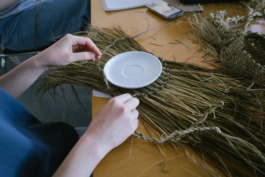
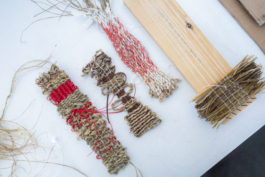
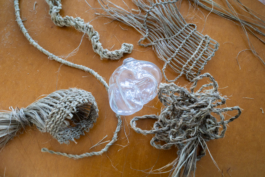
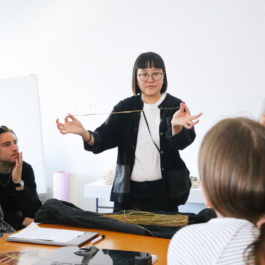
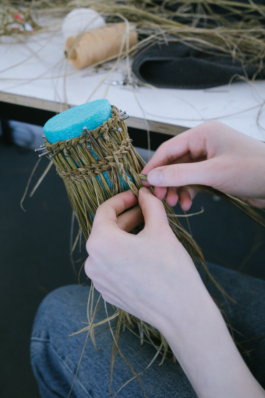
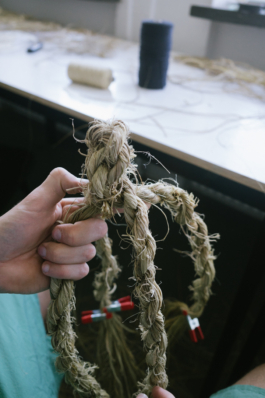

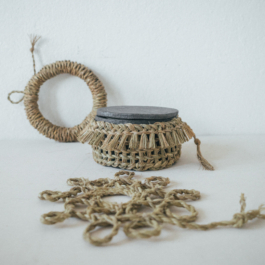
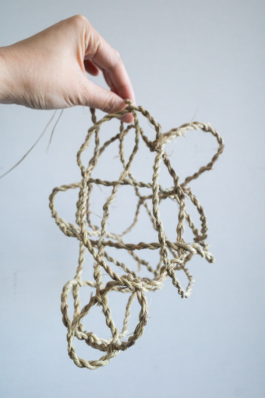
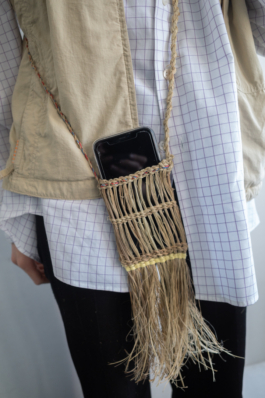
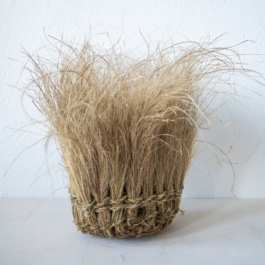
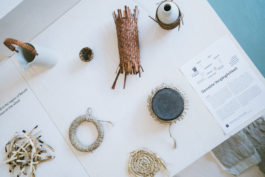
Featured works from:
[1] Victoria Fechtner, Undergraduate Textile and Surface Design
[2] Bar Esh and Melissa Kurt, Undergraduate Textile and Surface Design
[3] Inyeong Song, Undergraduate Textile and Surface Design
[4] Katharina Sauter, Undergraduate Product Design
50 TWINES EXPERIMENT [50TwExp] is a workshop organized under the program of greenlab. Initiated in 2010, the interdisciplinary greenlab at Weißensee Kunsthochschule Berlin links university projects with practice-oriented research and industry with the aim of inspiring and developing innovative concepts for sustainable and environmentally friendly products and services. In this research-oriented collaboration, sustainable design methods and strategies are to be applied to develop and implement new concepts and answers to ecological, social and cultural questions.
•
GreenDesign 12.0—Verflechtungen
Supervision by Prof. Barbara Schmidt and Prof. Dr. Zane Berzina.
Workshop concept and teaching by Evey Kwong.

Visual by Evey Kwong
50 TWINES EXPERIMENT [50TwExp] is a 2-day workshop and an ongoing research project exploring endless possibilities of hand-constructions and applications with combinations of materials and techniques experimentation.
The earliest twines were made by twisting, untwisting and braiding lengths of plant fiber. Twine is most commonly used in textiles and basketry. The invention of twine is at least as important as the development of stone tools for early humans. Archaeologists have called the development of twine, which can be made stronger and longer than its component fibers, “the string revolution”. Twine has a long history, with 32,000 year-old (flax fiber) twine discovered within a western Asian cave. Today, twine is industrially produced and an overlooked craft.



Students were encouraged to work collectively and intuitively to create fifty pieces of twine experiments in two days. These twine experiments, made in a short period of time, and using different experimental construction methods, will also be functional as a surface or for new applications.





Work results




50 TWINES EXPERIMENT [50TwExp] is a workshop organized under the program of greenlab. Initiated in 2010, the interdisciplinary greenlab at Weißensee Kunsthochschule Berlin links university projects with practice-oriented research and industry with the aim of inspiring and developing innovative concepts for sustainable and environmentally friendly products and services. In this research-oriented collaboration, sustainable design methods and strategies are to be applied to develop and implement new concepts and answers to ecological, social and cultural questions.
GreenDesign 12.0—Verflechtungen
Supervision by Prof. Barbara Schmidt and Prof. Dr. Zane Berzina. Workshop concept and teaching by Evey Kwong.
•
Featured works:
[1] Victoria Fechtner, Undergraduate Textile and Surface Design
[2] Bar Esh and Melissa Kurt, Undergraduate Textile and Surface Design
[3] Inyeong Song, Undergraduate Textile and Surface Design
[4] Katharina Sauter, Undergraduate Product Design